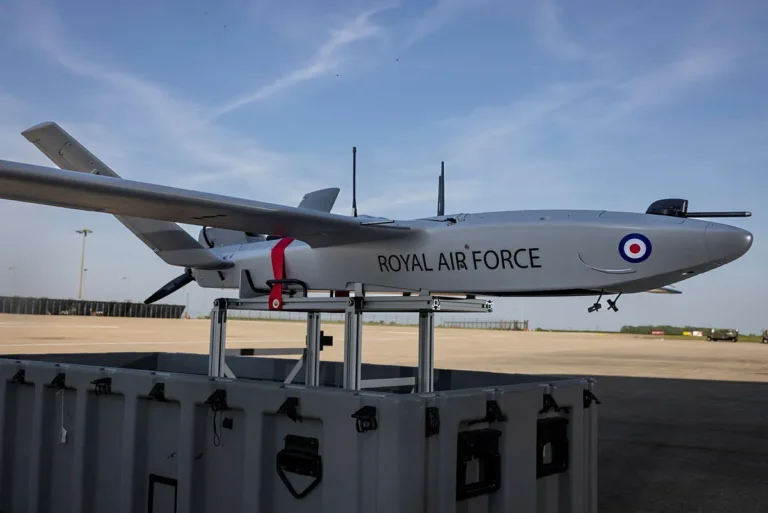Follow Us:

Share
Norway’s defense capabilities are set to take a major leap forward with the delivery of its first Joint Strike Missiles (JSM), which will be integrated into the country’s fleet of F-35A Lightning II stealth fighters.
This significant milestone, celebrated on April 28, 2025, marks the completion of the Norwegian Armed Forces’ program to procure 52 F-35As, positioning the country as a formidable force in the region.
The JSM will serve as the primary long-range air-to-surface weapon for Norway’s fleet and is poised to be adopted by several other nations, including the United States, Australia, and Japan.
Developed by Kongsberg Defence and Aerospace (KDA), the Joint Strike Missile (JSM) is a breakthrough weapon that will significantly enhance Norway’s military capabilities. Notably, the JSM is the only air-to-ground weapon in its class that can be carried internally by the F-35A, offering a strategic advantage over other air-to-ground weapons such as the Joint Air-to-Surface Standoff Missile (JASSM) and the Long-Range Anti-Ship Missile (LRASM), which can only be carried externally, compromising the stealth features of the aircraft.

The integration of the JSM with the F-35A is strategically timed to align with the ongoing Block 4 software upgrades, which are intended to maximize the aircraft’s capabilities. According to Forsvarsmateriell, Norway’s defense procurement agency, the Joint Strike Missiles acquisition was deliberately planned toward the end of the program to ensure the F-35s were equipped with the latest cutting-edge weaponry that complements the aircraft’s technological advancements.

While the exact number of JSM units Norway has acquired remains undisclosed, the integration of these missiles into the F-35A fleet is expected to significantly boost the operational range and strike precision of the aircraft. A Norwegian F-35 will remain in the U.S. for testing with the JSM, ensuring the software is fully optimized to support the weapon’s integration.
In a parallel development, the U.S. Air Force has also recognized the value of the JSM, announcing a $141 million acquisition contract with Kongsberg in May 2024.
This acquisition, set to be completed by August 2026, further underscores the growing interest in the missile, which has already demonstrated its capabilities through successful drop tests from an F-35A near Edwards Air Force Base in February 2021.
These tests, which monitored the missile’s separation and the aircraft’s performance, highlighted the JSM’s potential to enhance the U.S. Air Force’s long-range strike capabilities.

The Joint Strike Missiles (JSM) are based on Kongsberg’s Naval Strike Missile (NSM), an advanced weapon already used by several countries for naval operations. With a weight of 416 kg, a length of 4 meters, and a range exceeding 350 km (189 nautical miles), the JSM is well-suited for use in regions like the South China Sea, where naval assets are a primary target for airborne strikes.

The Joint Strike Missiles significantly enhance Norway’s defense posture by enabling its F-35A fleet to strike well-defended targets at considerable distances with high precision and minimal risk of detection.
According to Brigadier Jarle Nergård, Head of Defence Materiel Air Capabilities, the combination of the F-35A and JSM gives Norway a potent capability to target naval vessels, radars, and command centers without relying on allied support. This independence is crucial in the event of a conflict, especially in a region with robust air defenses.

Furthermore, the JSM’s capabilities support NATO’s vision for interoperable equipment among allied nations. As Eirik Lie, President of Kongsberg Defence and Aerospace, noted, the missile’s adoption by both the U.S. and Norway strengthens NATO’s collective defense capabilities, ensuring that allied forces can seamlessly operate alongside one another.
Norway’s investment in the Joint Strike Missile also serves a larger strategic purpose within NATO’s broader anti-access/area-denial (A2/AD) strategy. As Øyvind Kolset, head of Kongsberg’s missile and space division, pointed out, the missile will be a critical asset in deterring potential adversaries in the region, particularly in maritime environments where surface vessels are vulnerable to long-range precision strikes from the F-35.
The Joint Strike Missiles (JSM) program is not only a strategic asset for Norway but also a significant economic driver. Kongsberg Defence and Aerospace has contracted around 100 Norwegian companies to supply various components for the missile system, creating and securing numerous jobs within the country.
Additionally, Kongsberg is expanding its production capacity with factories in Australia and the U.S., set to be operational by 2028, ensuring the company can meet growing demand for both the JSM and its sister missile, the NSM.
Share
Defense Feeds is publication focusing on informing, engaging, and empowering the world by providing accurate information from defense technology.
Powered by Defense Feeds © 2025 – All rights reserved.